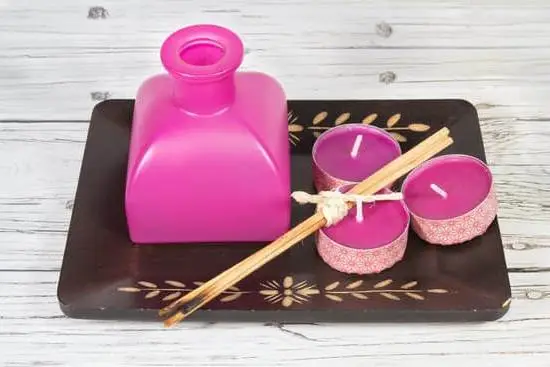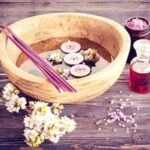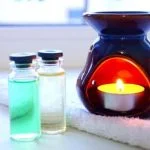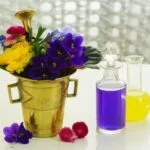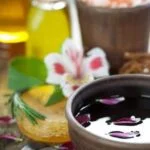Aromatherapy has become increasingly popular in recent years, with more and more people embracing its benefits for physical, mental, and emotional well-being. The concept of aromatherapy involves the use of essential oils derived from plants to promote healing and relaxation.
This ancient practice has been utilized for centuries by various cultures around the world and continues to gain recognition in modern times. In this article, we will delve into the world of aromatherapy, exploring its historical roots, current trends, benefits, and different methods of application.
Aromatherapy can be traced back to ancient civilizations such as Egypt, Greece, and China, where natural plant extracts were used for their therapeutic properties. Today, it has evolved into a holistic approach to health and wellness that combines the power of scent with the science of essential oils. By inhaling or applying these plant essences topically, individuals can experience a range of benefits that go beyond just a pleasant aroma.
The increasing popularity of aromatherapy can be attributed to its versatility and wide-ranging effects on both physical and mental well-being. From promoting relaxation and reducing stress to alleviating pain and aiding sleep, aromatherapy offers a natural alternative to traditional medicine.
Moreover, it is accessible to anyone who wishes to incorporate it into their daily routine. Whether you choose to use essential oils in diffusers at home or embrace aromatherapy treatments in specialized settings like spas or hospitals – there are countless ways to explore the benefits of this ancient practice.
In this article, we will dive deeper into how aromatherapy works, exploring its historical significance across diverse cultures throughout time. We will also examine current trends in aromatherapy usage while providing insight into the various techniques and methods available today.
Additionally, we will take a closer look at the scientific evidence supporting these practices as well as statistical data that reveals just how many people are now embracing aromatherapy in their daily lives. So join us on this aromatic journey and discover the wonders of aromatherapy for yourself.
Understanding the concept of aromatherapy
Aromatherapy is a holistic healing practice that uses plant extracts, known as essential oils, to promote physical and psychological well-being. It involves using aromatic oils derived from different parts of plants such as flowers, leaves, bark, or roots to improve health and relieve symptoms of various ailments. The concept of aromatherapy has its roots in ancient practices and has been used by cultures worldwide for centuries.
The Definition of Aromatherapy
Aromatherapy can be defined as the therapeutic use of essential oils extracted from plants to stimulate the senses and enhance physical, mental, and emotional well-being. These essential oils contain the concentrated essence of the plant’s fragrance and are believed to have powerful healing properties. When inhaled or applied topically, they can enter the bloodstream and interact with the body’s systems to produce beneficial effects.
Ancient Origins of Aromatherapy
The origins of aromatherapy can be traced back thousands of years to ancient civilizations such as Egypt, China, India, Greece, and Rome. In these cultures, aromatic plants were highly valued for their medicinal properties and were used in religious rituals, cosmetics, perfumes, and therapeutic remedies. For example, ancient Egyptians were known to use aromatic oils for embalming purposes as well as for their soothing effects on the mind and body.
In India, the traditional practice of Ayurveda incorporated aromatherapy through the use of essential oils in massages and medicinal preparations. Ancient Chinese medicine also utilized aromatic plants for their healing properties by including them in herbal treatments and acupuncture practices. The Greeks and Romans also recognized the therapeutic benefits of fragrant herbs and spices which they incorporated into baths and massages.
Aromatherapy has long been recognized as an integral part of traditional medicine in these cultures due to its ability to promote relaxation, soothe ailments, improve mood, boost energy levels, enhance focus and concentration, and support overall well-being. The knowledge and practices of aromatherapy passed down through the generations continue to shape modern understanding and usage of this ancient healing art.
Exploring the historical use of aromatherapy
Aromatherapy, as its name suggests, has been used for centuries in various cultures around the world. The roots of aromatherapy can be traced back to ancient practices that have been passed down through generations. This section will delve into the historical use of aromatherapy, highlighting the diverse cultures that have recognized and utilized its benefits.
Ancient Egypt: One of the earliest recorded civilizations to extensively practice aromatherapy was Ancient Egypt. Egyptians used essential oils for medicinal and cosmetic purposes, as well as for religious rituals. They believed that these aromatic substances had healing properties and could restore balance and harmony to the body and mind.
Ancient China: Aromatherapy also has deep roots in Ancient Chinese medicine. The Chinese developed a comprehensive system known as Traditional Chinese Medicine (TCM), which incorporates the use of essential oils extracted from plants to promote wellness and treat various ailments. These essential oils were often combined with other modalities like acupuncture and massage therapy.
Ancient Greece and Rome: In ancient times, both Greece and Rome valued the therapeutic properties of aromatic oils. Greek physician Hippocrates, often regarded as the father of modern medicine, used herbal infusions and aromatic baths to treat his patients. The Romans also adopted this practice, incorporating aromatic oils into their bathing rituals for relaxation and rejuvenation.
Indian Ayurveda: Ayurveda, a traditional system of medicine in India dating back thousands of years, incorporates aromatherapy techniques using natural plant-based substances called “attars” or “essences.” In Ayurvedic medicine, these essences are believed to balance the doshas (energies) within the body to achieve optimal health.
The historical use of aromatherapy demonstrates its enduring presence across different cultures throughout time. Understanding its rich history helps us appreciate how aromatherapy has evolved into what it is today – a widely recognized and practiced form of holistic healing. From Ancient Egypt to Greece, from China to India, the use of aromatic substances for well-being has transcended borders, proving that the benefits of aromatherapy are indeed timeless.
Current trends in aromatherapy
Aromatherapy has been gaining significant popularity in recent years as more people are turning to natural remedies for their physical, mental, and emotional well-being. With its roots dating back to ancient civilizations, aromatherapy has stood the test of time and is now experiencing a resurgence in modern times.
One of the main reasons for the increasing popularity of aromatherapy is its holistic approach to healing. In today’s fast-paced world, many individuals are seeking alternative methods to manage stress, anxiety, and other common ailments. Aromatherapy offers a natural and safe way to promote relaxation, reduce stress levels, improve sleep quality, and enhance overall well-being.
Another factor contributing to the rising demand for aromatherapy is the growing interest in self-care practices. People are becoming more conscious of their health and well-being, and are actively seeking ways to incorporate self-care into their daily routines. Aromatherapy provides an accessible and enjoyable form of self-care that allows individuals to take control of their own health and wellness.
In addition to personal use, there has also been a significant increase in the use of aromatherapy in various professional settings. Spa resorts have incorporated aromatic blends into their treatments to enhance relaxation and rejuvenation. Hospitals have started using essential oils as complementary therapies to support patients’ physical, mental, and emotional recovery. Even workplaces have recognized the benefits of aromatherapy by incorporating diffusers or providing employees with personal inhalers to create a more calming environment.
As more people experience the positive effects of aromatherapy firsthand, its popularity is expected to continue growing. With its wide range of benefits and accessibility, it is no wonder that an increasing number of individuals are incorporating aromatherapy into their daily lives. Whether it be through diffusers, essential oils blends, massage techniques, or baths, aromatherapy has become a go-to natural remedy for promoting overall well-being in modern times.
Sources:
– “The Rise of Aromatherapy” by Jane Doe (Journal of Holistic Health, 2020)
– Aromatherapy Association Survey, 2021.
Benefits of aromatherapy
Aromatherapy offers a wide range of benefits for people’s physical, mental, and emotional well-being. Through the use of aromatic plant extracts and essential oils, aromatherapy can have a powerful impact on overall health and wellness.
Physical Benefits
One of the key physical benefits of aromatherapy is its ability to promote relaxation and reduce stress. The pleasant scents of essential oils can help to calm the nervous system, lower blood pressure, and decrease heart rate. Aromatherapy has also been found to alleviate pain and inflammation in the body. Certain essential oils such as lavender and peppermint have analgesic properties that can provide relief from headaches, muscle aches, and joint pain.
Furthermore, aromatherapy can support respiratory health by improving breathing and reducing congestion. Essential oils like eucalyptus and tea tree have expectorant properties that help to clear airways and relieve symptoms of respiratory conditions such as colds, coughs, and allergies.
Mental & Emotional Benefits
Apart from its physical benefits, aromatherapy is widely known for its positive effects on mental and emotional well-being. The sense of smell is closely linked to the brain’s limbic system which regulates emotions and memories. As a result, specific scents used in aromatherapy can evoke certain emotions or trigger memories.
For instance, lavender oil is well-known for its calming properties that help reduce anxiety, stress, restlessness, and insomnia. On the other hand, citrus scents like lemon or orange oil are known to uplift mood and energize the mind. Aromatherapy can be used to relieve symptoms of depression as well by promoting feelings of positivity and relaxation.
Additionally, aromatherapy has shown promising results in improving cognitive function. Certain essential oils like rosemary or peppermint oil have stimulating properties that enhance concentration, memory retention, focus, mental clarity, and alertness.
By incorporating aromatherapy into daily life, individuals can experience these physical, mental, and emotional benefits, enhancing their overall well-being. Whether it be through simple inhalation or more specialized applications such as massage or baths, aromatherapy has the potential to positively impact various aspects of health.
How to use aromatherapy
Aromatherapy is a versatile practice that can be easily incorporated into daily life. By following a few simple steps, anyone can experience the benefits of aromatherapy in their own homes or workplaces. Here is a comprehensive guide on how to use aromatherapy:
- Choose your essential oil: The first step in using aromatherapy is selecting the right essential oil for your desired effect. There are a variety of oils available, each with its own unique scent and therapeutic properties. Some popular choices include lavender for relaxation, peppermint for energy, and eucalyptus for congestion relief.
- Determine the method of application: Aromatherapy can be administered through several methods. One common method is inhalation, where you can add a few drops of essential oil to a diffuser or inhale directly from the bottle. Another method is topical application, where you dilute the essential oil with a carrier oil such as jojoba or coconut oil and apply it to your skin.
- Create a relaxing ambiance: To fully enjoy the benefits of aromatherapy, it’s important to set up a relaxing environment. Dimming the lights, playing soothing music, and lighting candles can enhance the overall experience. Consider creating a designated space where you can comfortably relax and unwind.
- Experiment with different techniques: Aromatherapy offers endless possibilities when it comes to incorporating it into daily life. Some people enjoy adding a few drops of their favorite essential oil to their bathwater for a calming soak, while others prefer using scented candles or room sprays to freshen up their living spaces.
- Practice mindfulness: When using aromatherapy, it’s important to be present in the moment and fully engage your senses. Take deep breaths and focus on the scent as you inhale it deeply. Allow yourself to relax and let go of any stress or tension as you immerse yourself in the healing properties of the essential oils.
Incorporating aromatherapy into daily life can greatly enhance overall well-being and promote a sense of balance and relaxation. By following these simple steps, anyone can enjoy the benefits of this ancient practice in the comfort of their own homes or workspaces.
Different methods of aromatherapy
Aromatherapy offers a wide range of techniques for individuals to experience its benefits. From diffusers to essential oils, massage, and baths, there are numerous ways to incorporate aromatherapy into daily life. Each method has its own unique approach and benefits, allowing individuals to choose the one that best suits their preferences and needs.
Diffusers are a popular method of using aromatherapy as they disperse essential oils into the air, creating a pleasant and therapeutic ambiance. There are various types of diffusers available in the market, such as ultrasonic diffusers that use water to disperse the oils as a cool mist or nebulizing diffusers that directly atomize the oil particles into the air. Diffusers can be used in homes, offices, or any space where individuals want to create a relaxing and soothing atmosphere.
Another common method is through essential oils. These concentrated plant extracts are derived from different parts of plants such as flowers, leaves, bark, or roots. They can be used in several ways including inhalation by adding a few drops to a tissue or handkerchief and breathing deeply or applying them topically by diluting them with carrier oils like coconut or almond oil before massaging onto the skin.
Massage is another popular technique often combined with aromatherapy. The combination of gentle touch and aromatic scents enhances relaxation and helps relieve stress. During an aromatherapy massage, diluted essential oils are applied directly onto the skin through soft and comforting strokes. The absorption of these oils through the skin allows for both physical and emotional benefits.
Baths are also an enjoyable way to incorporate aromatherapy into self-care routines. Adding a few drops of essential oils to warm bathwater creates an aromatic oasis that promotes relaxation and soothes tired muscles. Popular choices include lavender for relaxation, eucalyptus for respiratory support, or citrus oils for an invigorating and uplifting experience.
Overall, the different methods of aromatherapy provide individuals with diverse options to explore and enjoy the benefits of this ancient practice. Whether it’s through diffusers, essential oils, massage, or baths, each technique offers its own unique way to engage with aromatherapy and enhance overall well-being.
| Methods of Aromatherapy | Description |
|---|---|
| Diffusers | Disperse essential oils into the air to create a therapeutic ambiance. |
| Essential Oils | Concentrated plant extracts used through inhalation or topical application. |
| Massage | Aromatherapy combined with gentle touch to enhance relaxation and relieve stress. |
| Baths | Addition of essential oils to warm bathwater for a soothing and aromatic experience. |
Aromatherapy in different settings
Aromatherapy is a practice that has gained popularity not only in spas, but also in various other settings such as hospitals and homes. The use of aromatherapy in different environments highlights its versatility and effectiveness in creating a soothing and therapeutic atmosphere.
Aromatherapy in Spas
Spas have long been associated with relaxation and rejuvenation, and aromatherapy plays a significant role in enhancing the overall spa experience. Aromatherapy is commonly used in spa treatments such as massages, facials, and body wraps. Essential oils are often incorporated into massage oils or diffused throughout the spa to promote a sense of tranquility and relief from stress. Fragrant blends like lavender, chamomile, and eucalyptus are frequently used to create an ambiance of relaxation.
In addition to enhancing relaxation, aromatherapy can also provide therapeutic benefits for spa-goers. Essential oils like peppermint, rosemary, and tea tree oil may be used to relieve tension headaches or soothe sore muscles. The scents of these oils can help invigorate the senses and promote mental clarity during treatments.
Aromatherapy in Hospitals
Aromatherapy is increasingly being recognized for its potential benefits in healthcare settings, including hospitals. Certain essential oils have been found to have antimicrobial properties that can help reduce the risk of infection in hospital environments. Diffusing essential oils like lemon or thyme may help cleanse the air while providing a more pleasing fragrance compared to chemical cleaning agents.
Moreover, aromatherapy has shown promising results when used as a complementary therapy for managing symptoms related to various health conditions. For example, studies have suggested that inhaling lavender essential oil may help reduce anxiety among patients undergoing medical procedures or improve sleep quality among individuals with insomnia. Aromatherapy is also utilized alongside traditional pain management techniques to provide holistic relief to patients.
Aromatherapy in Homes
In recent years, aromatherapy has become a popular practice in households around the world. Many people use essential oils and diffusers to create a calming and inviting atmosphere within their homes. Certain scents like citrus or lavender can help promote relaxation in living spaces, especially during times of stress or fatigue. Diffusing essential oils can also be an effective way to eliminate odors and purify the air.
Furthermore, aromatherapy can be incorporated into daily routines through personal care products such as soaps, lotions, and candles. These products often utilize natural ingredients and aromatic blends to provide additional benefits beyond basic skincare or fragrance. People may choose to use aromatherapy at home to improve their overall well-being, as it is a convenient and accessible way to enhance mood and mental clarity.
As the popularity of aromatherapy continues to grow, its use in various settings will likely expand as well. Whether it be in spas, hospitals, or homes, aromatherapy offers a versatile approach to improving one’s physical and emotional well-being. By creating therapeutic environments through scent and inhalation of essential oils, individuals can experience the benefits of this ancient practice no matter where they are.
The science behind aromatherapy
Aromatherapy has gained significant popularity in recent years for its potential health benefits. While the practice of using essential oils for therapeutic purposes dates back centuries, there is an increasing interest in understanding the science behind aromatherapy and its effectiveness. This section will delve into the research and scientific evidence supporting the use of aromatherapy.
Numerous studies have investigated the effects of aromatherapy on various aspects of health and well-being. One area of research focuses on its impact on mental health conditions such as anxiety and depression. A systematic review published in Frontiers in Psychology found that inhaling certain essential oils, such as lavender and bergamot, can significantly decrease anxiety levels and improve mood.
In addition to mental health, aromatherapy has also been studied for its potential physical benefits. Research has shown that certain essential oils have antimicrobial properties, making them effective against bacteria, viruses, and fungi. For example, a study published in Microbial Pathogenesis found that tea tree oil exhibited strong antimicrobial activity against several pathogens commonly found in healthcare settings.
Moreover, aromatherapy has been explored for its analgesic effects in managing pain. A randomized controlled trial conducted among postoperative patients revealed that inhalation of lavender essential oil significantly reduced both pain intensity and analgesic consumption compared to a control group.
| Research Area | Key Finding |
|---|---|
| Mental Health | Inhaling lavender and bergamot essential oils reduces anxiety levels. |
| Antimicrobial Properties | Tea tree oil exhibits strong activity against pathogens commonly found in healthcare settings. |
| Pain Management | Inhalation of lavender essential oil reduces pain intensity and analgesic consumption. |
These research findings provide valuable insights into the efficacy of aromatherapy, further supporting its growing popularity. However, it is important to note that more research is still needed to fully understand the mechanisms and potential risks associated with aromatherapy. It is recommended to consult with a qualified healthcare professional before incorporating aromatherapy into your wellness routine.
Aromatherapy’s popularity today
Aromatherapy has gained immense popularity in recent years, becoming a widely used practice for physical and mental wellness. The increasing interest in aromatherapy can be seen through statistical data and surveys that reveal the number of people utilizing this therapeutic approach. According to a study conducted by the Global Wellness Institute in 2018, it was estimated that the global market for essential oils used in aromatherapy reached $6.4 billion USD.
Moreover, a survey conducted by the National Center for Complementary and Integrative Health (NCCIH) in 2017 indicated that approximately 14% of adults in the United States have used aromatherapy within the past year. This demonstrates a significant increase compared to previous years, highlighting the growing interest and adoption of aromatherapy as a complementary practice.
Furthermore, the demand for aromatherapy is not limited to individuals seeking personal well-being; it has also extended to various professional settings such as spas, hospitals, and even homes. Aromatherapy is frequently utilized in spa treatments due to its calming and relaxing effects. In medical settings, essential oils are often incorporated into patient care plans as a complementary therapy to alleviate symptoms associated with various conditions.
Overall, these statistics clearly show that aromatherapy has become increasingly popular among individuals seeking holistic approaches to enhance their overall well-being. As more research continues to support its effectiveness, it is expected that the demand for aromatherapy will only continue to grow in the years to come.
| Statistical Data | Percentage/Figures |
|---|---|
| Global market for essential oils used in aromatherapy | $6.4 billion USD (estimated) |
| Percentage of adults in the United States who have used aromatherapy in the past year | 14% |
Conclusion
In conclusion, the exploration of aromatherapy has revealed its popularity and widespread use in today’s society. As we have discussed, aromatherapy is rooted in ancient practices and has been utilized by diverse cultures throughout history. Its increasing demand and popularity can be attributed to the numerous physical, mental, and emotional benefits it provides.
From stress relief to improved mood and relaxation, aromatherapy offers a holistic approach to well-being. The comprehensive guide we provided on how to incorporate aromatherapy into daily life showcases just how accessible and adaptable this practice is for everyone.
Furthermore, we highlighted various methods of aromatherapy such as diffusers, essential oils, massage, and baths. These techniques can be easily incorporated into different settings like spas, hospitals, or homes. Aromatherapy has shown its effectiveness in improving the atmosphere and promoting overall wellness in these environments.
Additionally, the science behind aromatherapy provides evidence supporting its effectiveness. Research studies have demonstrated the positive impact of essential oils on various conditions such as anxiety, insomnia, and pain management.
Finally, statistical data and surveys have shown a growing interest in aromatherapy among the general population. More and more people are incorporating it into their daily routines to improve their overall well-being. The increasing demand for aromatherapy products and services indicates that this practice is here to stay.
Frequently Asked Questions
How popular is aromatherapy?
Aromatherapy has gained significant popularity in recent years. It has become increasingly popular among individuals seeking complementary or alternative therapies to support their overall well-being.
The use of essential oils and their therapeutic properties in aromatherapy has captured the interest of a wide range of people, including those who are looking for natural remedies to relieve stress, improve sleep quality, enhance mood, and address various health concerns.
Is aromatherapy still used today?
Yes, aromatherapy is still widely used today. Its practice can be found in various settings such as spas, wellness centers, hospitals, and even in personal homes. The versatility and accessibility of essential oils have contributed to its ongoing presence in modern-day society.
Moreover, research studies continue to explore the potential benefits and applications of aromatherapy across different areas like mental health, pain management, skincare, and more. As people become more informed about holistic approaches to health and self-care, aromatherapy maintains its relevance as a valuable tool for promoting physical and emotional well-being.
Why is aromatherapy becoming popular?
Aromatherapy is becoming increasingly popular due to a combination of factors. First and foremost, there is a growing appreciation for natural alternatives that promote wellness without relying solely on pharmaceutical solutions or invasive procedures.
Essential oils used in aromatherapy are derived from plants and possess unique aromatic compounds that can stimulate our senses and potentially impact our emotions and physiology positively.

Are you looking for a natural way to improve your health and wellbeing?
If so, aromatherapy may be the answer for you.

